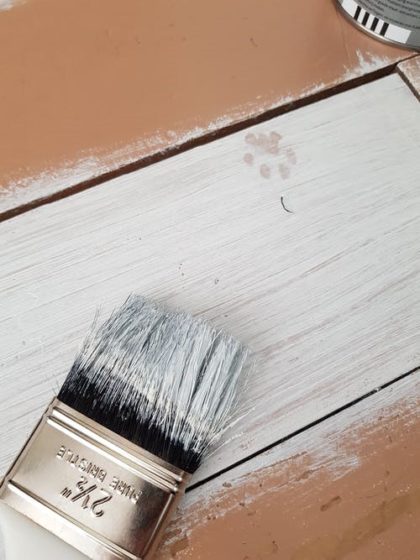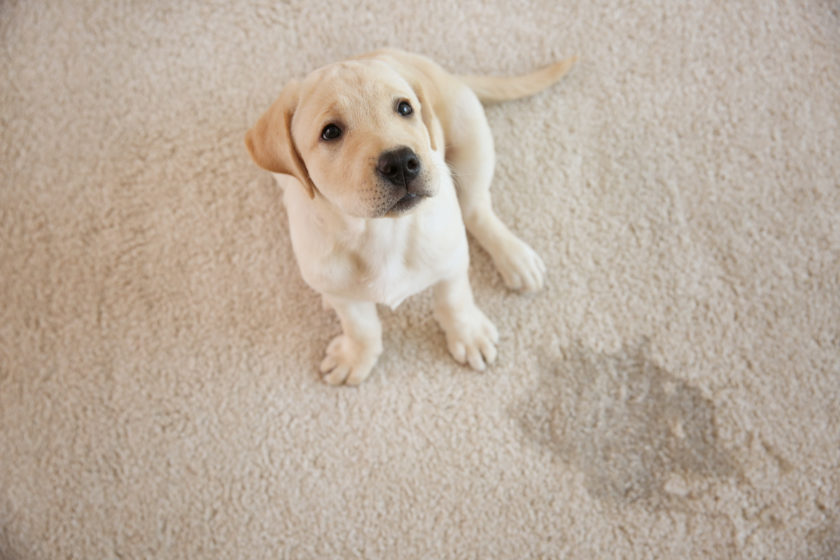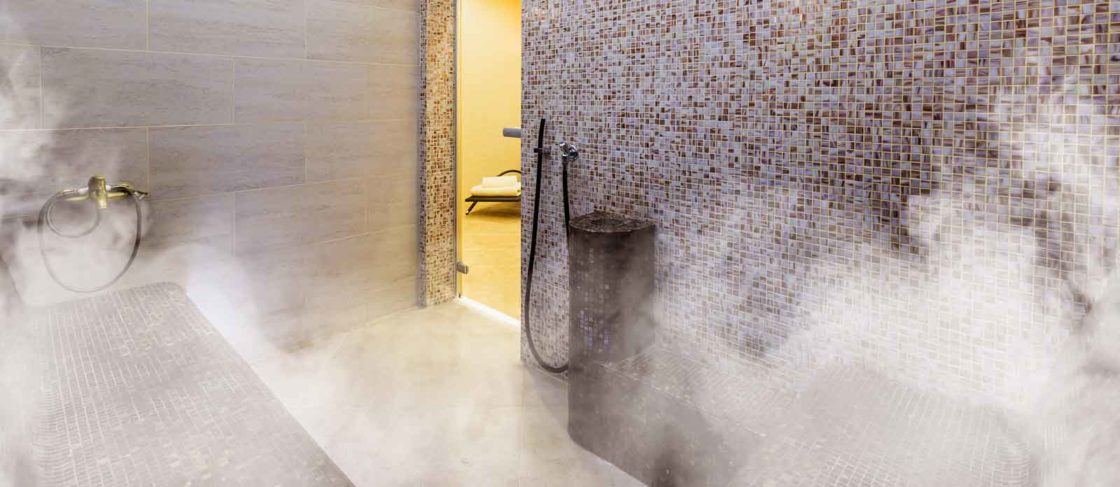There’s no greater feeling than when you’re done painting your dinner table, furniture, or wall. However, the good feeling is quickly snuffed out upon realizing that you’ve made a mess while painting and your brush is doused in polyurethane.
You know that you cannot leave your brush in this state because it’ll quickly harden, worsening a bad situation. Fret not as you’ve come to the right place.
Read on as we walk you through how to clean polyurethane brush the right way. We will highlight ways that don’t involve using a steamer or vacuum. That means you won’t need to buy new brushes.
What Type of Brush Is Required for a Polyurethane Application?
When it comes to applying oil based polyurethane, remember to use a brush with natural bristles. The reason is that they are constructed from animal hair, which means they are best suited to absorb and spread oil paint finishes. On the flipside, natural bristle brushes are pricey, so they require TLC to last longer.
The synthetic counterparts, particularly nylon bristle brushes, are ideal for water-based finishes. That’s because they don’t absorb lots of moisture, making them perfect for water-based polyurethane. Synthetic brushes are more versatile than their natural bristle counterparts, are cheaper, and give a more uniform coat.
Cleaning Water Based Polyurethane From a Brush

Although it’s a straightforward process that takes a few minutes, it’s usually overlooked. To clean a brush with water-based polyurethane, you’ll require the following items.
- A pair of latex gloves
- Two or three containers
- Running water
- Dish soap
To get started, follow the steps below.
1. Fill the Cups With Clean Water
Ensure the cups are big enough to immerse the bristles of the brush.
2. Immerse the Brush Into the Cup of Water
Once you insert the brush into the first cup of water, tilt it forward and backward. Doing so guarantees the water reaches in-between the bristles before getting to the ferrule – the metal part holding the brushes. After a few minutes, you’ll notice that the water has changed color.
3. Progress to the Second Cup of Clean Water
Once the first cup of water becomes too dirty, that’s your cue to repeat the process with the second cup of clean water. Repeat the process in the third cup until you notice the water is clear.
4. Clean the Brush With Dish Soap
Rinse the brush in your sink with running cold water. Spritz some dish soap onto it and scrub it properly with both hands for up to 5 minutes until the bristles are squeaky clean.
5. Hang It to dry
You have free rein to hang the brush in your workshop or over the sink where you washed it. After 12 to 24 hours, you can reuse the brush.
Cleaning Oil based Polyurethane From a Brush
Brushes come in handy for the efficient application of oil based polyurethane. While you may be hesitant to clean your brush, it is possible to get it spick and span in just a few minutes.
As a rule of thumb, always clean your brush when it’s damp rather than dry. To clean oil based polyurethane from your brush, you’ll need the following tools.
- Three cups
- Running water
- Dish soap
- A pair of latex gloves
- Turpentine or a paint thinner
- A nylon scrub brush
1. Pour Turpentine Into the Cups
Empty the paint thinner into three or four cups that are large enough for you to immerse the brush up to the ferrule.
2. Dip the Brush Into the Turpentine
Immerse the brush into the first cup of paint stripper, ensuring all the bristles are covered. Move the brush clockwise and anticlockwise in the cup to ensure the paint thinner makes its way in-between the bristles.
3. Progress to the Second Cup
Once the turpentine becomes dark brown, transfer your brush into the third cup of turpentine. Be patient as you wait for the color change. Repeat the process until you notice no color change despite swirling the cup in turpentine.
It’s worth noting that you may need to repeat this process five or six times before there’s no color change. Therefore, you’ll need more cups and turpentine.
4. Scrub the Brush
Despite getting rid of the polyurethane from your brush, a thorough wash is still needed. Begin the cleaning process by rinsing the brush under running cold water, spritz some dish soap and scrub it thoroughly using both hands. That entails running your fingers through the bristles and pressing them against your palms.
Keep in mind that the first wash won’t lather due to the turpentine in the brush. Wash as many times as possible to get a clear and generous lather from the brush using the same amount of soap.
5. Scrub With a Nylon Brush
Rather than using your hands to scrub the brush, you can use a nylon brush. Spritz some soap on it and run it through the bristles. The nylon brush will get the job done with considerably less elbow grease. You may need to repeat the process up to three times until you get a clear lather.
6. Dry the Brush
You can hang the brush in your workshop or over the sink and leave it to dry completely.
Importance of Cleaning Polyurethane Brush
Now that you know how to clean polyurethane brush the right way, let’s explore the perks of doing so.
1. Have It on Standby
If your career revolves around woodwork, you’ll appreciate the value of always being ready. Although you may get advance notice on some tasks, pleasant surprises may crop up, requiring you to be ready with oil paint brushes.
Preparedness will save you the inconvenience of having to buy a polyurethane brush at a moment’s notice or the frustration from cleaning a hardened brush from your last task.
2. Maintain the Quality of Your Work
Failure to clean your brush immediately results in the calcification of the polyurethane, making it an uphill battle to clean. Given that the bristles are hard, you can damage them during the cleaning process.
The next time you need to use your brush, you may notice unevenness in the application rather than a smooth, aesthetically pleasing finish.
3. It Exhibits Professionalism
When you gain traction as a DIY expert, it’s a no-brainer that you’ll be expected to have your box of tools handy. For instance, if someone comes to your home and asks to borrow a brush, having to explain that it’s dirty and requesting time to clean it doesn’t come off well.
4. Increases the Lifespan of Your Polyurethane Brush
If you’re curious about how long a polyurethane paint brush should last, the answer is a decade or more if you keep it in tiptop condition.
Bottom Line
Knowing how to clean polyurethane brush is cost-effective in the long run. Rather than purchasing a new brush for each task, you can reuse one clean brush for a decade or more with proper care and maintenance and the right brush cleaner method.
FAQ
Let’s delve into the answers to some of the commonly asked questions regarding polyurethane brushes.
Should you reuse a polyurethane brush?
Yes! Provided that bristles are intact, you have free rein to use the brush for oil based or water-based polyurethane uses. Remember to clean the brush once you complete each task to preserve its integrity.
Should you use one polyurethane brush for oil based and water based paint applications?
Although you can use the same brush if you clean it thoroughly after each task, the results will be different in water based paint and oil based applications. While a synthetic brush is ideal for water based polyurethane, the natural bristle counterparts are perfect for oil based applications.
How do you clean a polyurethane brush with mineral spirits?
To clean your polyurethane brush with mineral spirits, pour the solution into three cups, dip the brush in the first cup and continue moving through the cups as you did in the other steps provided in the article above. Once done, scrub the brush under running water, scrub it with a nylon bursh, and then let it dry.

